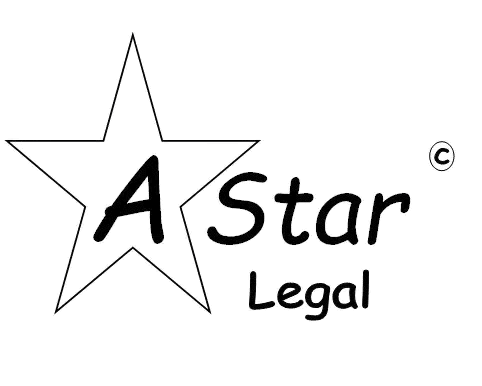Last updated on January 29th, 2025 at 12:07 pm
Registered trademarks help businesses and brands to build their identity and reputation in the market and among people. Trademarks protect brands and make them stand out in the market.
Although, all the steps should be taken carefully and thoughtfully during the trademark registration process. But sometimes, after registration, changes are required in the existing registered trademark. So now, the modification of an existing registered trademark is possible in India.
Trademark Related Service Consultant, Call Now: +91 9314321001
Table of Contents
ToggleModifications in a Registered Trademark
Under Section 59 of the Trademark Act 1999, the applicant can apply for amendment to existing registered trademarks in certain situations. For this, the registered owner has to apply for the TM-P form.
Who has the right to Modification of the Trademark?
As per the Trademarks Act, 1999 the Controller General of Patents, Designs and Trademarks is the Registrar of Trademarks who has the power to modify a trademark. If a person needs to make some modifications to his registered trademark, he can apply to make modifications to his registered trademark to the Registrar.
Who can apply for Post-Registration Modification?
Only the applicant of a registered trademark can apply for modification. If an applicant wants to rectify trademark filing errors, they can apply for a change in the registered trademark.
Conditions for Modifying a Trademark
If any modification is required after the trademark is registered, then there are some conditions for modification as follows:
- The name and address of the business can be changed.
- If a new license is registered, then the modification can be done.
- If the control or use of the trademark is changed, then the modification can be done.
- The Ministry does not permit changes if the trademark search has to be conducted again.
- If the modification would cause a substantial change in the trademark identity then the modification is not permitted.
- The list of goods and services covered by a trademark can be limited, but the list is not allowed to be expanded.
Non-permitted Modifications
- Changes in logo and colour specification.
- User date changes.
- Change in trademark class.
- Change in type of trademark.
- Changes in the description of a trademark.
Limitations of Trademark Modification in India
- Any change in the trademark should not alter the distinctive character of the trademark or make it similar to any other existing registered trademark.
- While making modifications to the services and goods of a trademark, it is necessary to ensure that the new products and services are related to the already existing products and services.
- For some modifications, such as changes in the address or name of the owner, such modifications are required to be filed within a certain period.
- It is possible that third parties may oppose requested modifications because many modifications infringe on existing rights or may confuse the marketplace.
Procedure for Modifying a Trademark
- Any change like creation, alteration, or deletion of any entry related to the trademark can be made with the help of Form TM-O.
- The form should be accompanied by a statement of all the facts like why it is changed and the reason for these changes.
- If the applicant for modification of the trademark is not a registered trademark owner, he must first apply to the trademark registrar’s office.
- The application is first sent to the registered user of the trademark for their consent.
- Within a month the registrar sends the application to all the registered users. In case of any queries, the registrar waits for another month. If no queries are raised within 3 months, the modification is allowed under Section 98 of the Trademark Rules, 2017.
- If any kind of question is raised. So the original applicant has to respond to the user of the trademark within one month. Once the queries are answered, the change is complete.
- If any change is to be made in the registered address of the business, Form TM-P is filed.
- After applying in Form TM-P, the Registrar publishes the application in the journal, and if no questions or objections are raised by anyone, the change will be made.
- If any questions or objections are raised, then the applicant has to submit a reply with supporting proofs.
- The Trademark Registry, after considering all the evidence and arguments, will take the final decision on whether the requested amendment should be allowed or rejected.
- If the modification is allowed, the Trademark Registry issues a fresh certificate reflecting the modification in the registered trademark.
Key Points for Trademark Modification
- If the modification changes the identity of the trademark, then apply for a new trademark.
- Proper documentation is important while submitting the modification request.
- If any query is raised, then respond to it as soon as possible so that the change process is not delayed.
- To make this whole process a little simpler, you can consult legal experts.
Read Also: Best Trademark Attorney in India
Consultation for amendment in existing registered trademark
Modification of an existing registered trademark is very easy to apply. If you also want to change your trademark name, log,o or any other change in the trademark you can consult with us at A Star Legal Associates or you can directly call on the given number.
Trademark Related Service Consultant, Call Now: +91 9314321001
Conclusion
The process of modification of an existing registered trademark is quite difficult for both the applicant and the registrar. But it is a necessary process. With this, companies can make changes in their trademark with growth and time even after registration. Whether it is a change in the business name, address, logo, or license agreement.
FAQ:
Can I modify my registered trademark?
Yes, you can modify your trademark after it is registered with certain conditions.
How do I modify my trademark application?
To modify your trademark you need to file an amendment application with the TM-M form.
Can we change the trademark class?
Before registration, a trademark class can be changed.
Can you undo your trademark?
The cancelation process for a trademark can be filed anytime.
Where we need to apply for the modification
The file of modification is applied at the official site Indian Trademark Registry.
For more information stay updated with:- A Star Legal Associates







